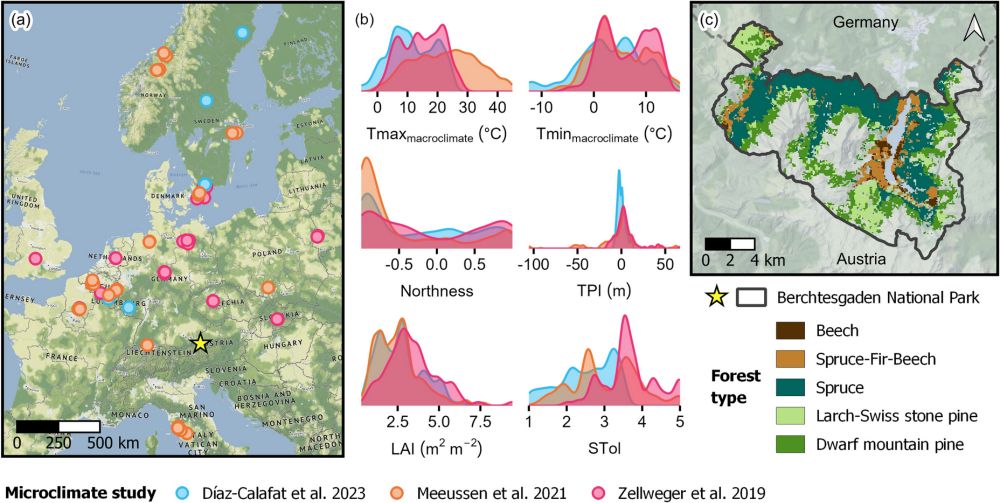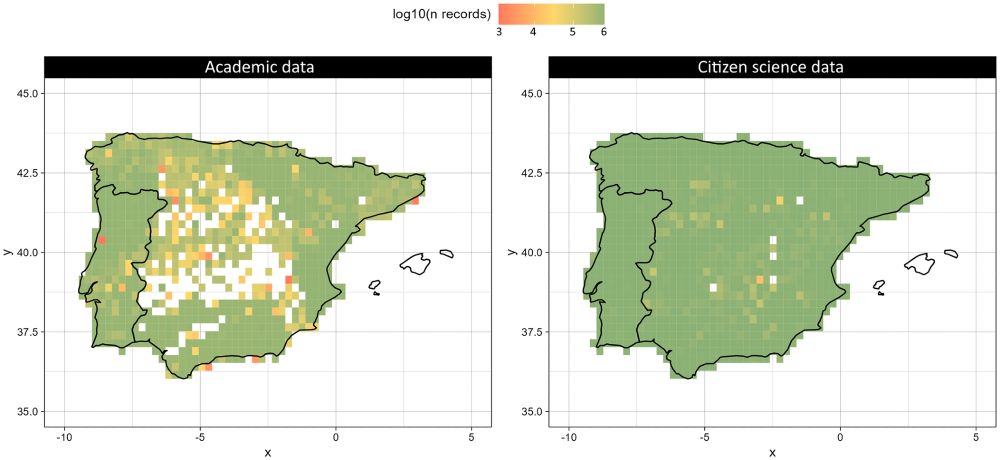
We used flower-based eDNA metabarcoding to uncover how forest structure and microclimate shape the diversity of flower-visiting arthropods in a Swedish boreal forest. #pollinators #eDNA 🧬🌼

We used flower-based eDNA metabarcoding to uncover how forest structure and microclimate shape the diversity of flower-visiting arthropods in a Swedish boreal forest. #pollinators #eDNA 🧬🌼
Why do queen bumblebees seem to "wake up" on weekends?
It turns out, they don’t.
But we see them more on weekends, and that’s a problem for climate research. Here’s why. 👇🐝
📄 Díaz-Calafat & Luna-Santamaría (2025)
doi.org/10.1007/s135...

Why do queen bumblebees seem to "wake up" on weekends?
It turns out, they don’t.
But we see them more on weekends, and that’s a problem for climate research. Here’s why. 👇🐝
📄 Díaz-Calafat & Luna-Santamaría (2025)
doi.org/10.1007/s135...
🟢 spain.inaturalist.org/observations...
#observacióndelasemana 📸 por @jdiazcalafat.bsky.social

🟢 spain.inaturalist.org/observations...
#observacióndelasemana 📸 por @jdiazcalafat.bsky.social
#CBB @ibe-barcelona.bsky.social @imedea.bsky.social
@csic.es @fundaciobit.bsky.social @ba.ieo.es
🔗 diari.uib.cat/Hemeroteca/L...




#CBB @ibe-barcelona.bsky.social @imedea.bsky.social
@csic.es @fundaciobit.bsky.social @ba.ieo.es
🔗 diari.uib.cat/Hemeroteca/L...



The effects of climate change on boreal plant-pollinator interactions are largely neglected by science
🐝 🪲 🪰 🦋 🌼 🌲 🌡️
Read more here: doi.org/10.1016/j.ba...

The effects of climate change on boreal plant-pollinator interactions are largely neglected by science
🐝 🪲 🪰 🦋 🌼 🌲 🌡️
Read more here: doi.org/10.1016/j.ba...

In Sweden, once we reach this stage, we nail one copy of the thesis to the wall, where it'll stay for remembrance. Now three weeks to the public defence! 📆


In Sweden, once we reach this stage, we nail one copy of the thesis to the wall, where it'll stay for remembrance. Now three weeks to the public defence! 📆
🔗 journals.plos.org/plosone/arti...

🔗 journals.plos.org/plosone/arti...


